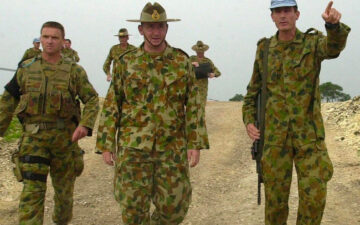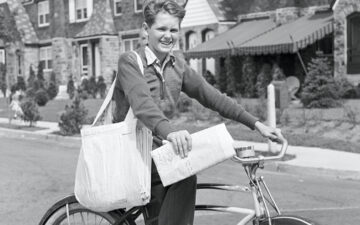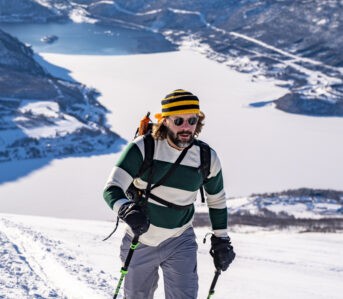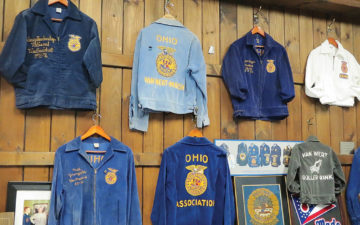Frogskin, known colloquially as ‘Duck Hunter Camo’ is one of the most appreciated camouflage patterns within the heritage clothing scene. The exact reason why brands like The Real McCoy’s, Warehouse & Co., and many more choose to reproduce Frogskin pieces so often isn’t completely known, however, the pattern’s roots in World War II — specifically the Pacific War era — mean that Frogskin pieces were widely issued and thus became a memorable piece of the sartorial history of the War.
In Part 1, we look at Frogskin’s beginnings in World War II through to its use in the Korean War and beyond. In this piece, we’ll be following Frogskin to Vietnam and looking at its utilitarian use outside of the battlefield, plus where to find great examples of frogskin on the modern market.
Colonial Conflicts and Proxy Wars

The Dutch East Indies Special Troops Corps (KST) drew upon a diverse set of recruits during the Indonesian National Revolution (1945-1949). Both the Netherlands and later Indonesia would field their own frogskin interpretations. This 1949 image was found via laststandzombieisland.
Soviet and Western interests shaped the postwar period like two great tectonic plates. Wherever their ideologies collided, countries were shaken along colonial fault lines that could open up and swallow entire continents. The aftershock of a new, unfamiliar type of warfare sent military planners reeling. These conflicts—from Indochina to Cuba—were devoid of the grand World War maneuvers and instead relied upon nimble hit-and-run tactics. Fighting ideas instead of armies became a crux of the late 20th century.
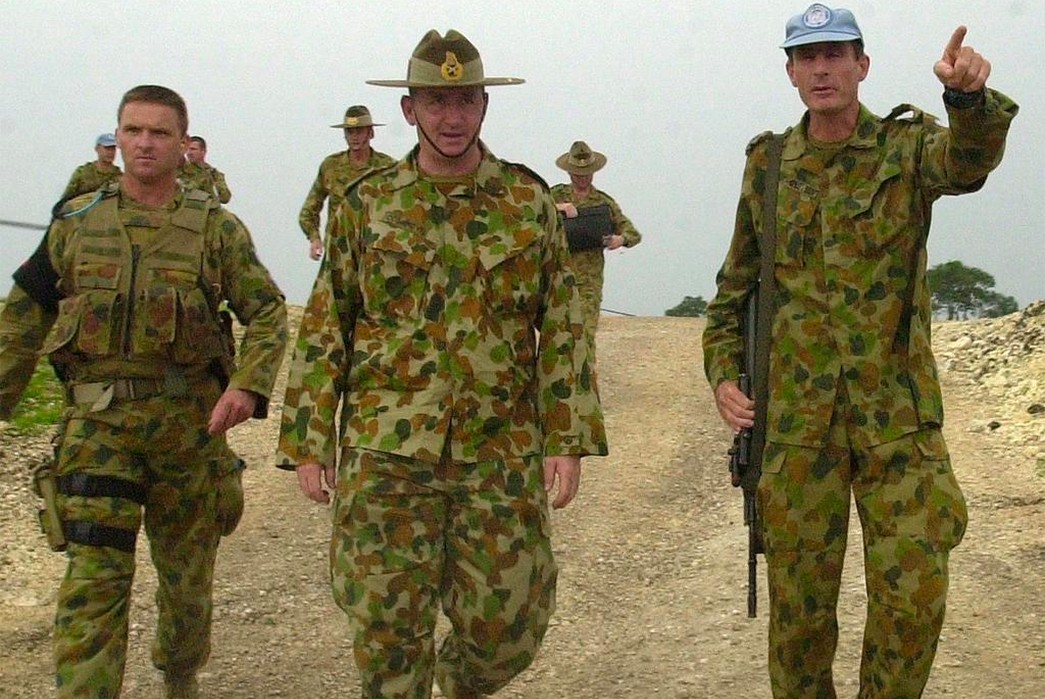
Australia conducted a peacekeeping operation in East Timor for several years starting in 1999. Their descendant of frogskin may be the most recent military adaptation. Image via The Australian.
A proven camouflage was needed on these new battlefields and frogskin had already achieved results. The massive buildup for World War II meant that an ample supply of everything was on hand. Many Asian and European countries, which had recently been liberated from Axis occupation, needed to build up their forces quickly and the former Allies stepped up to supply them. A few later produced their own indigenous versions of frogskin. For example, Dutch forces tapped a huge stockpile of U.S. jungle suits in the Pacific and eventually designed a unique variant for their vanguard troops. Indonesia, which achieved independence from the Netherlands, followed suit.
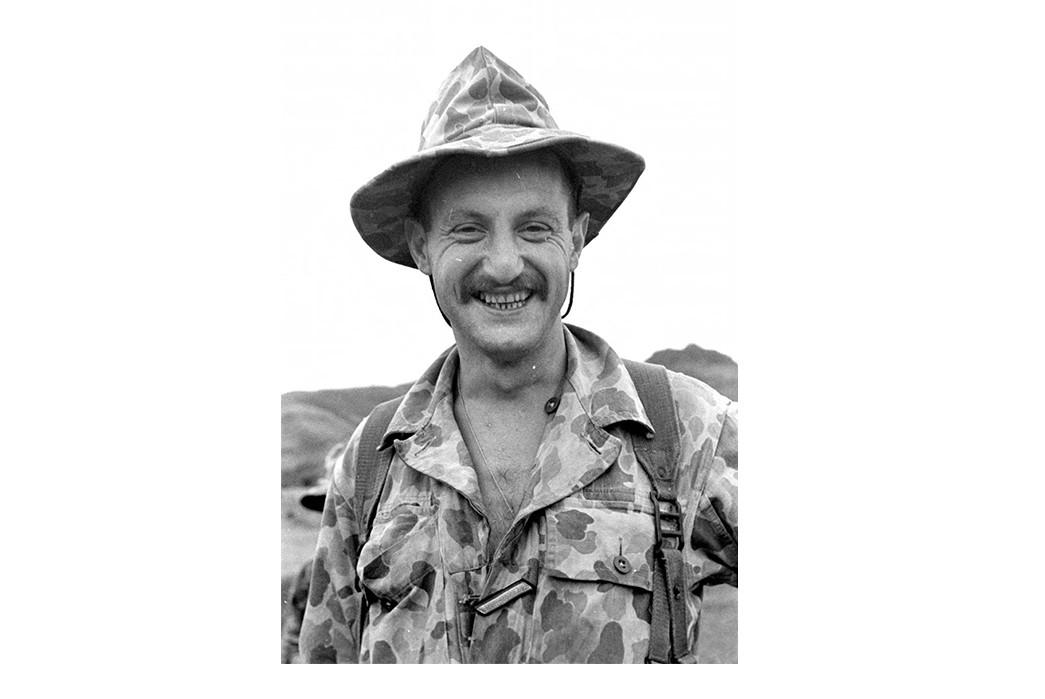
A French paratrooper, Sergent Fabretti, is about to board a plane in French Indochina (modern Vietnam), 1952. According to the website Kommando Post, this jacket is a British-made version similar to the example shown in Part 1. Image via UWM Libraries.
Vietnam and Beo Gam
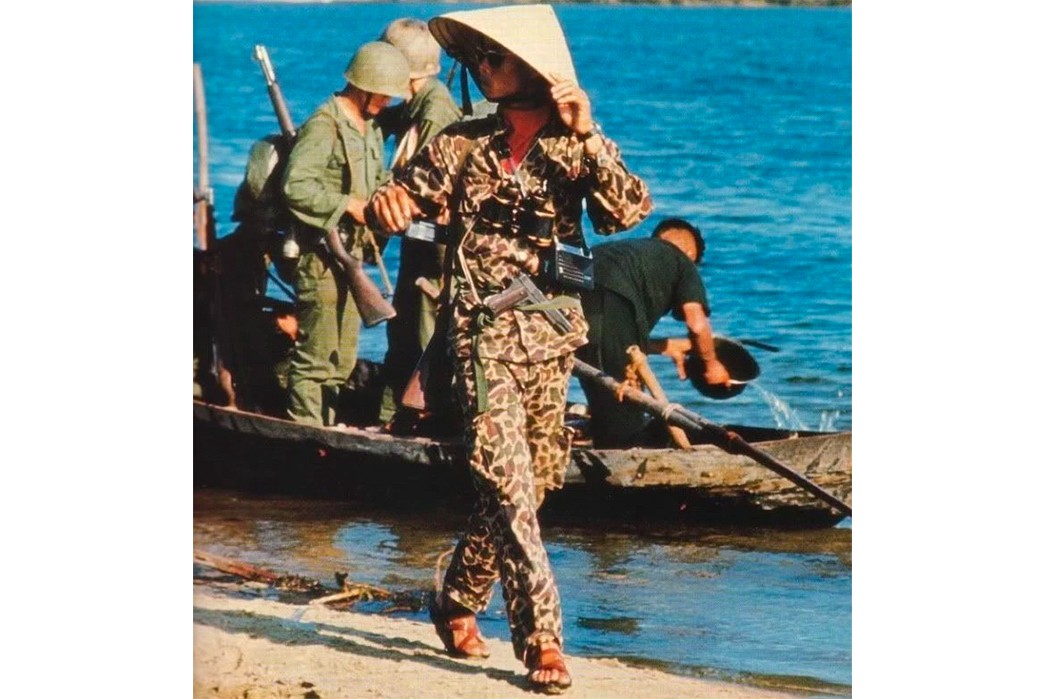
An ARVN (South Vietnamese) Ranger in “beo gam” or “leopard” pattern fabric from the late ’60s. This camouflage was a South Vietnamese flavor of frogskin. Image via Pinterest/Mr Man.
By the time American troops became fully involved in Vietnam during the mid-1960s, frogskin helmet covers had been replaced by the Mitchell pattern. Clandestine operators still favored the old look, however. President Kennedy created the elite Navy SEALs in 1962 and when faced with what to wear in Southeast Asia—their answer? Sears & Roebuck.
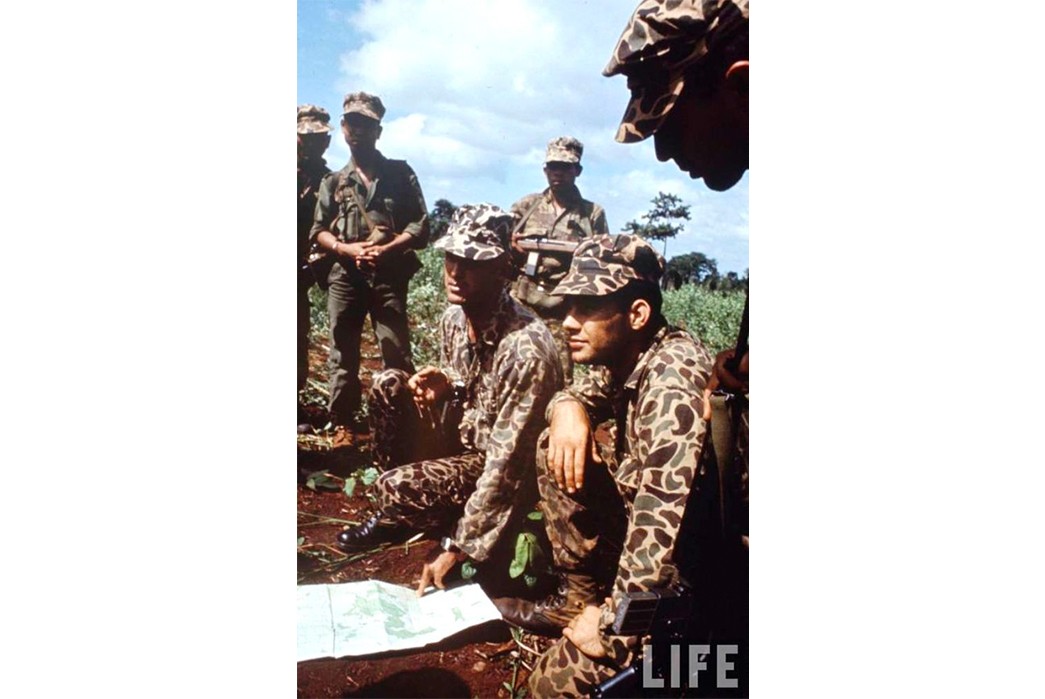
American advisors working with their South Vietnamese allies. Beo gam was a favorite of select special forces units from both nations. Image via Life Magazine.
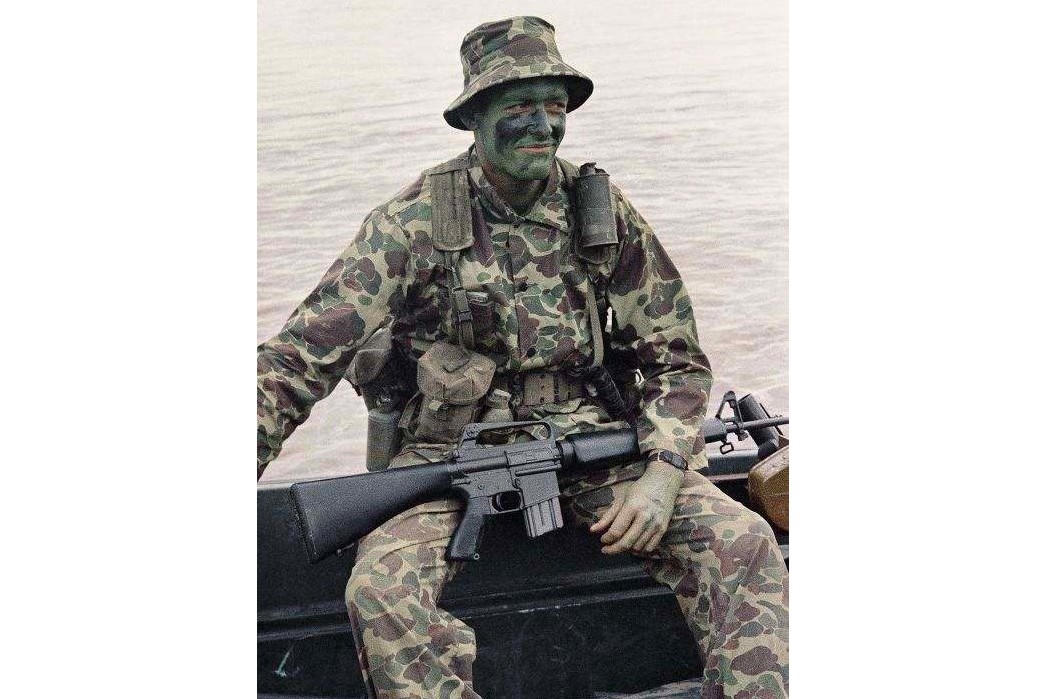
A Navy SEAL purportedly operating in Vietnam, ca. 1965. Image via U.S. Militaria Forum/doyler.
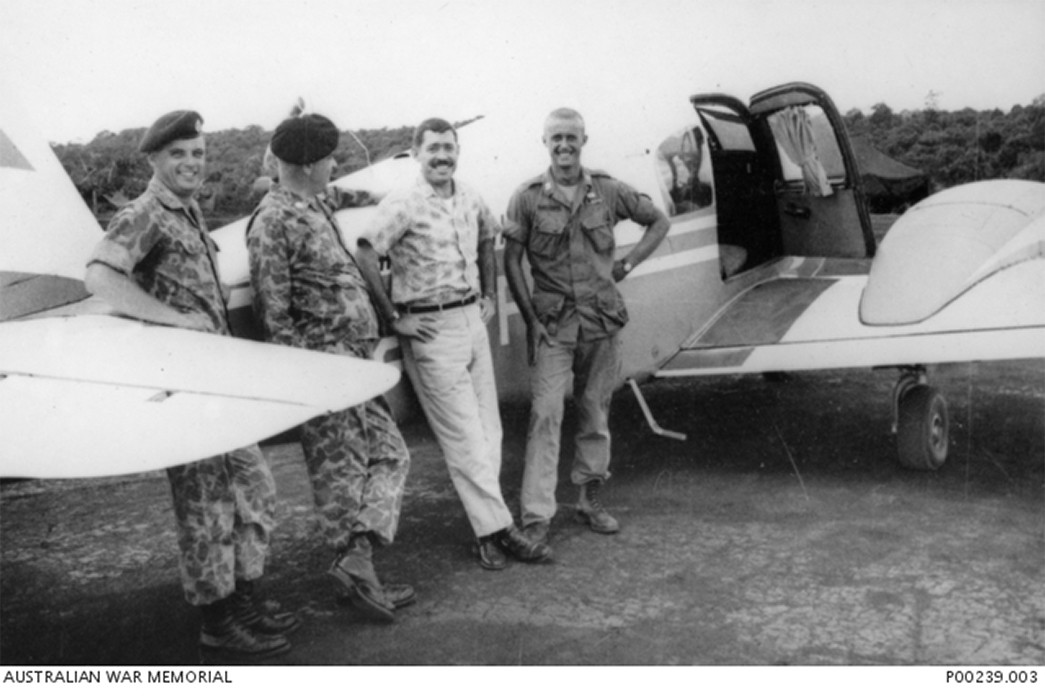
An Australian officer (far left) pictured with American military and CIA personnel in South Vietnam, 1964. Image via the Australian War Memorial.)
“Dogfaces” to Duck Hunters
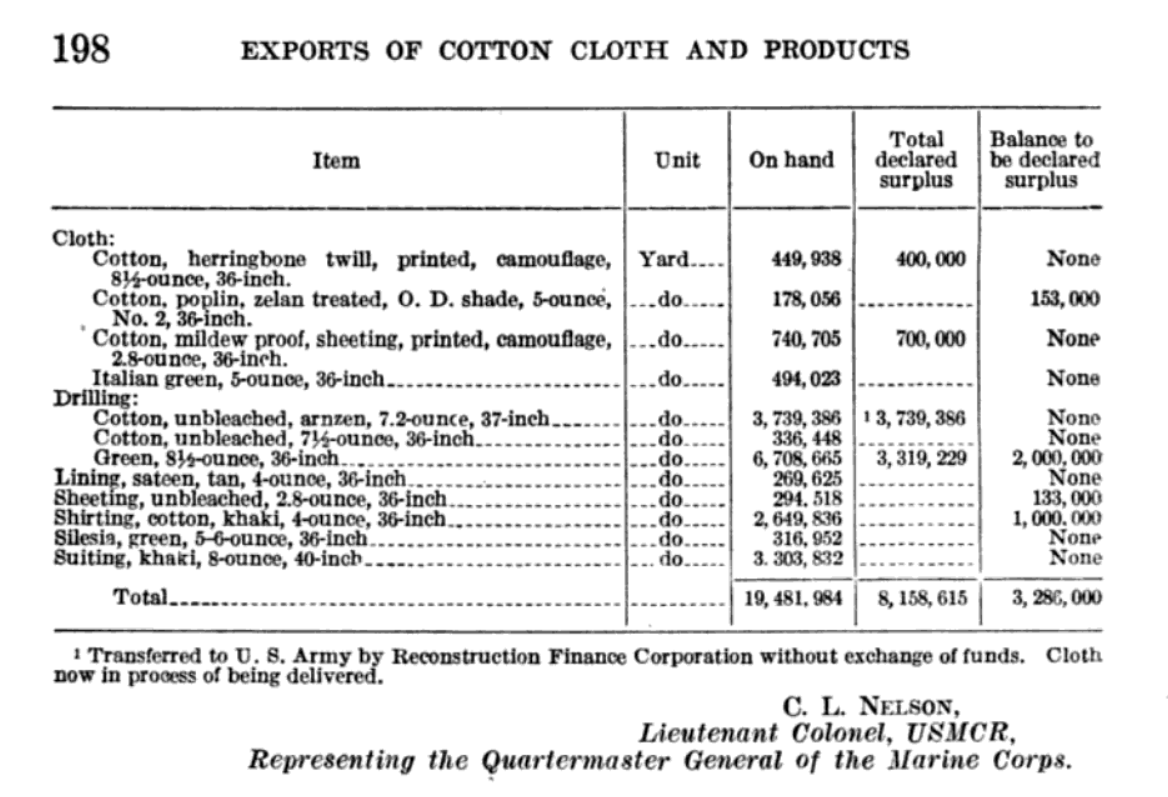
Congressional records reveal that everything in this table was declared as surplus following World War II. My guess is that 400,000 yards could make a decent batch of clothing! Image via Google Books.
Let’s talk slang for a second. The term “dogface” refers to an American soldier and it became popularized during World War II. As servicemen flooded home in the Postwar period, they were ready to enjoy the fruits of their labors—an era of leisure activities and hobbies was about to boom.
This included everything from auto racing to camping and—of course—hunting. Conveniently, bolts of fabric and machinery were now idle as the last wartime contracts were filled. Mail-order catalogs and sportsman magazines were blank canvases for duck hunting camo. Thus, “duck hunter” is synonymous with “frogskin.”
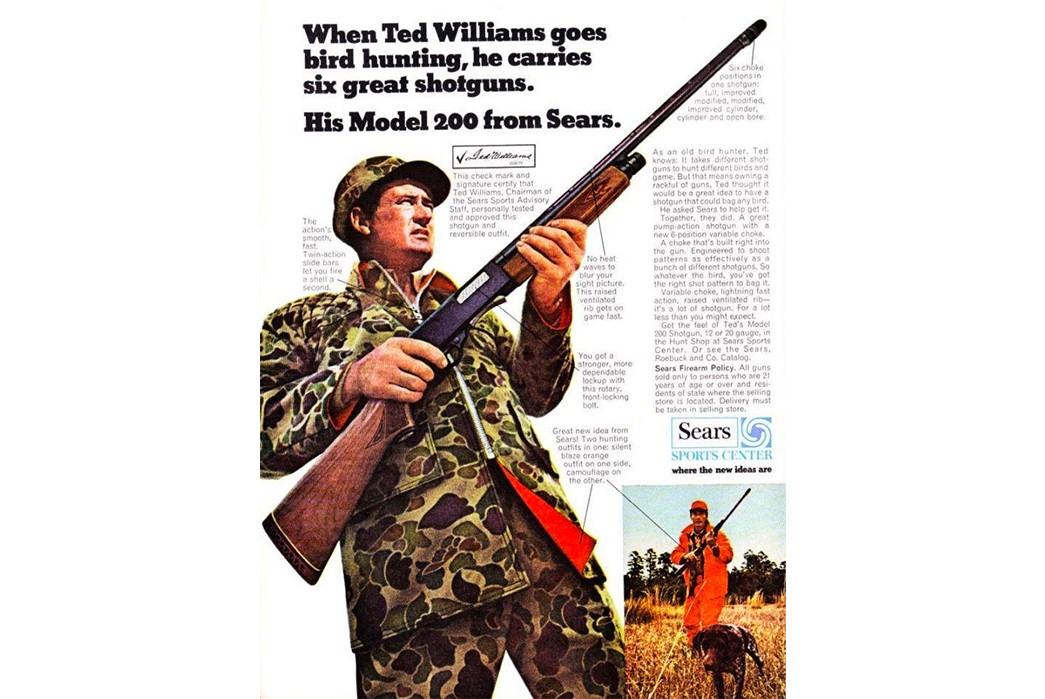
Specific to hunting is the reversible blaze orange. Sometimes, you want to be seen to avoid eating a load of steel birdshot. Image via Shotgun World.
Why duck hunting specifically? In my limited hunting experience, in which no ducks were blasted from the sky, I can tell you that these flighty fowl have excellent eyesight. You must remain well hidden to succeed. You can hunt deer in a Pennsylvania Tuxedo if you stay downwind of them, but ducks command an all-encompassing view of the marshes and lakeshores below.
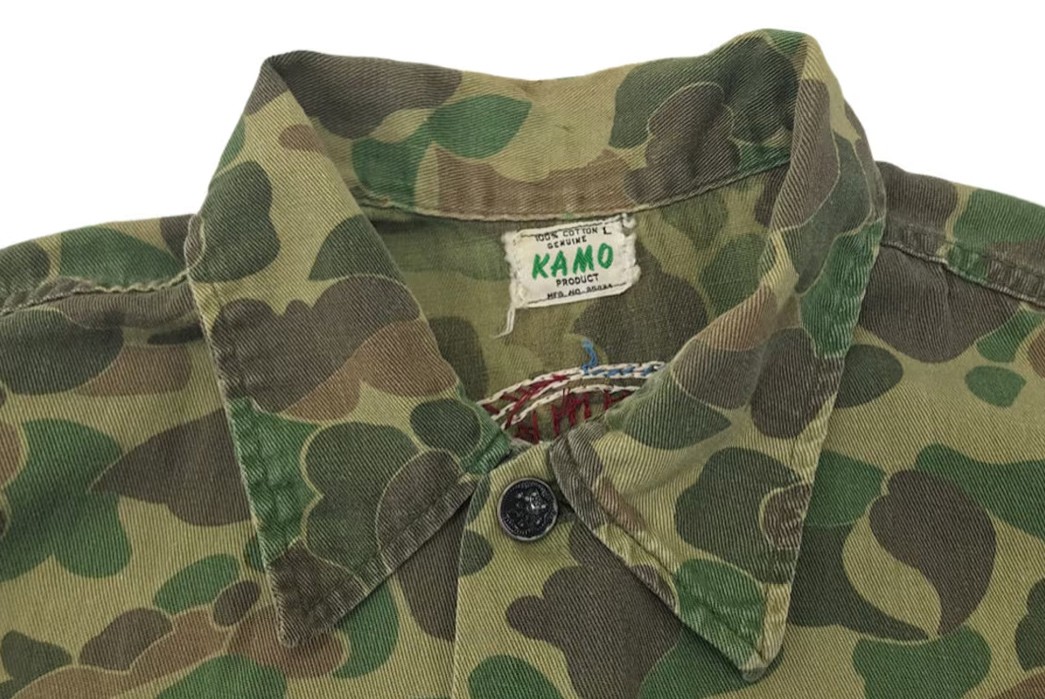
This postwar KAMO-brand jacket features military surplus service buttons but the fabric isn’t quite HBT—it’s a simpler twill. Had the stock of HBT already run out? Image via Etsy/Kaori.
To what extent the surplus HBT fabric was used for civilian clothing isn’t known to the author. In the years following 1945, many variations of prints and fabrics came into existence. KAMO, one Postwar civilian brand among many, became a favorite of clandestine forces.
While they weren’t operating behind enemy lines, my father and grandfather had a pair of lined full-zip coveralls and a matching two-piece outfit from their duck hunting phase in the 1970s. All three garments were from a Sears catalog. Rather than HBT, the shells were a type of waterproofed material that had a synthetic or partially synthetic hand to it. Much to my chagrin when I was researching this piece, I discovered that both sets of clothing ended up in a cardboard box that went to the thrift store years ago. Hindsight is 20/20.
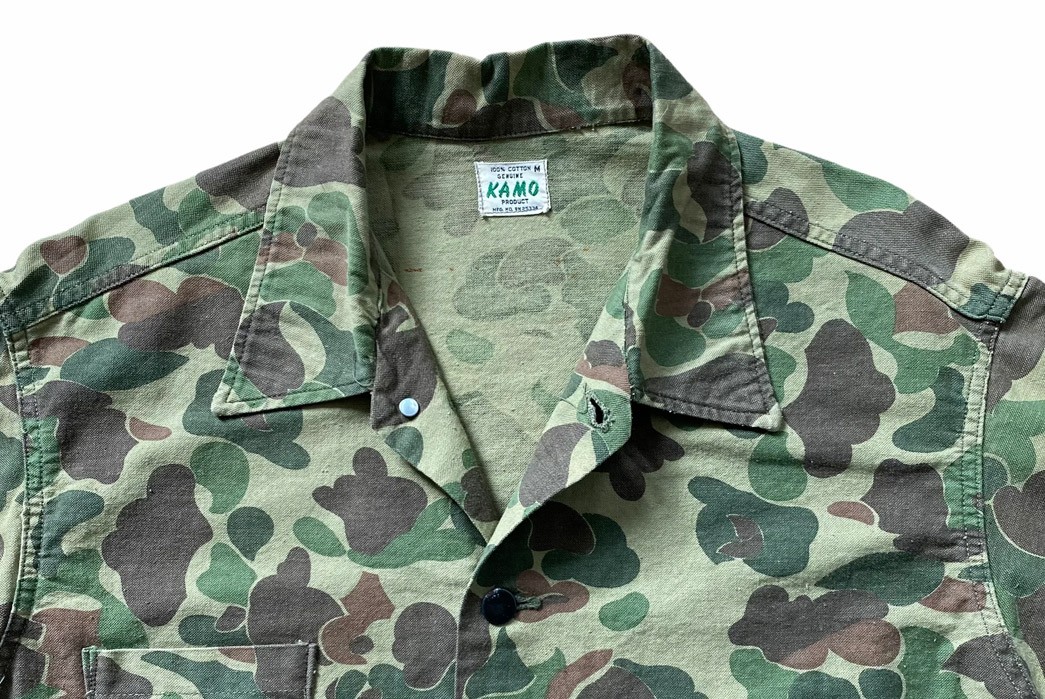
Another KAMO variation in a plain-woven fabric, perhaps poplin, and featuring riveted buttons. Image via Rock Hopper Vintage.
Note that the aforementioned garments were lined and insulated for warmth during the winter duck hunting season. However, frogskin was originally intended for HBT utility uniforms destined for Pacific jungles. Woolrich noticed this discrepancy too and rolled out CamWOOLflage in the 1980s. While duck hunting is best done with water-repellant clothing, camouflage in general has expanded to many garments in recent years.
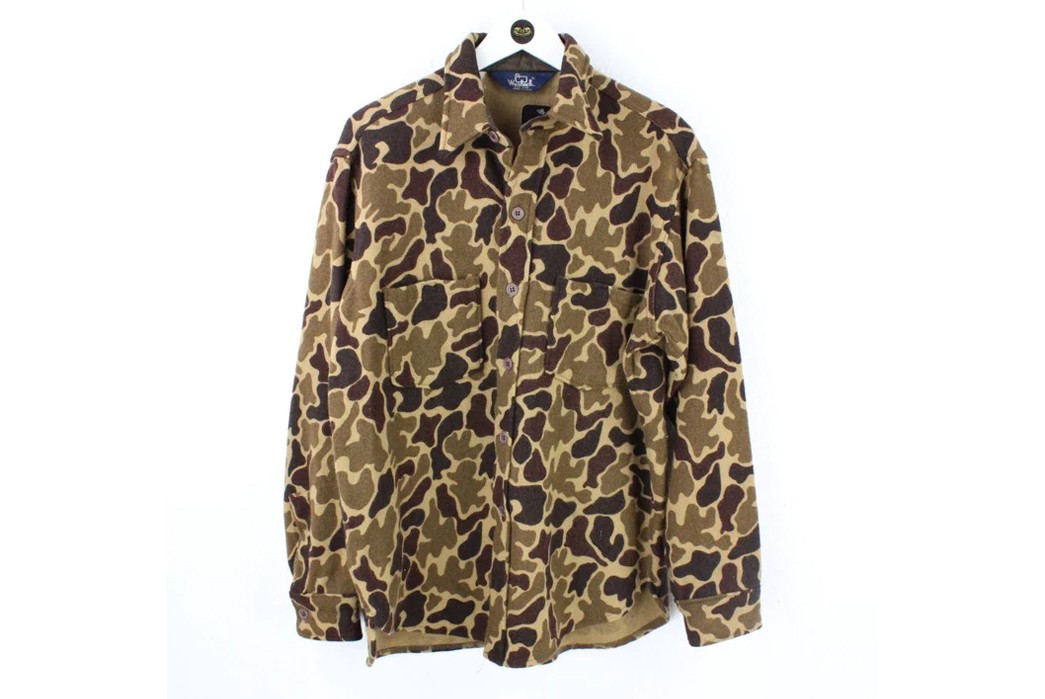
A new grail item for me: Woolrich duck hunter flannel. Image via Vintage & Rags.
Where to Find Frogskin Today
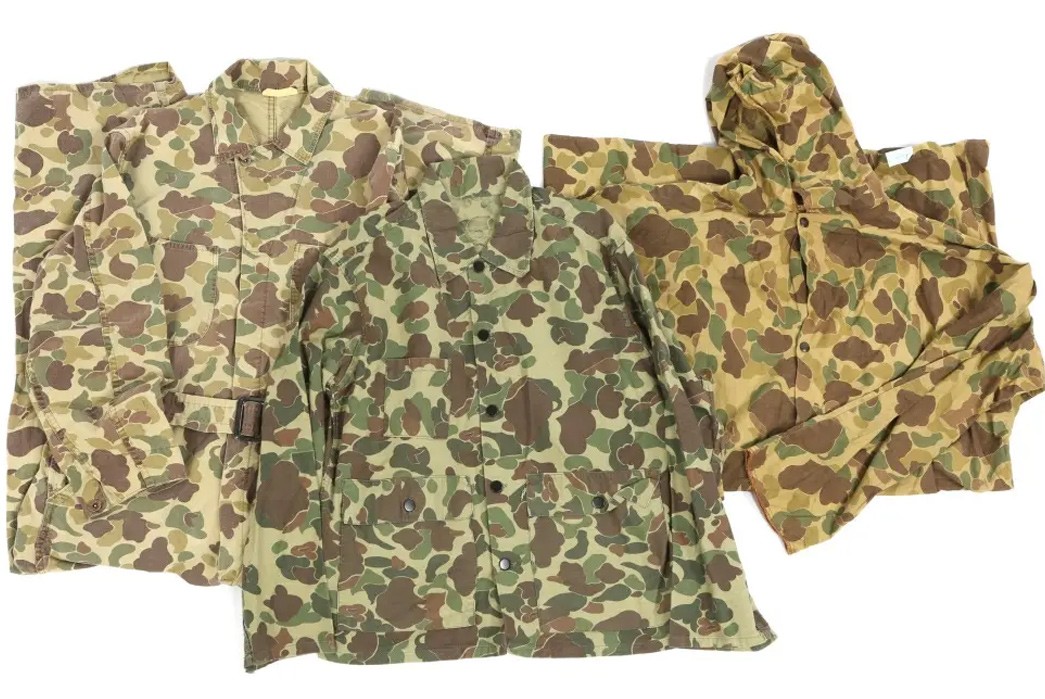
Camo can be colorful. Image via Proxibid.
I’ve seen more “vintage” camos on store shelves recently. Outdoorsmen flock to South Carolina every year, like their intended prey, and they buy truckloads of new clothing and equipment. In the last decade, L. L. Bean boots were the hot thing. It seems like it’s now open season on frogskin for fashionable hunters and vintage aficionados alike. Luckily, there’s a growing number of new makers for old camo.
Clutch Cafe
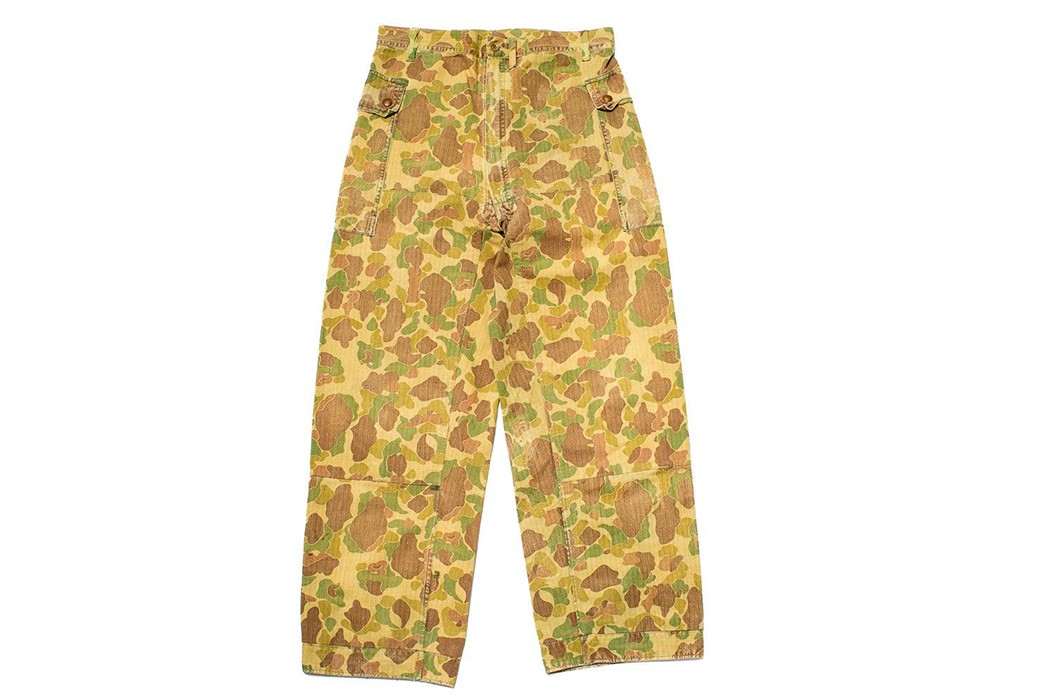
Original WWII HBT Frogskin Overalls, available at Clutch Cafe for $805
For all things heritage and made-well, Clutch Cafe is your spot. They’ve got tons of reproduction goods from the best Japanese brands, with Warehouse & Co. producing an interesting pair of reversible frogskin pants based on USMC Paratrooper wear from the Pacific War (below). Clutch also sources its own true vintage, and they happen to have an original pair of WWII frogskin overalls, cut down into trousers by their original owner (above).
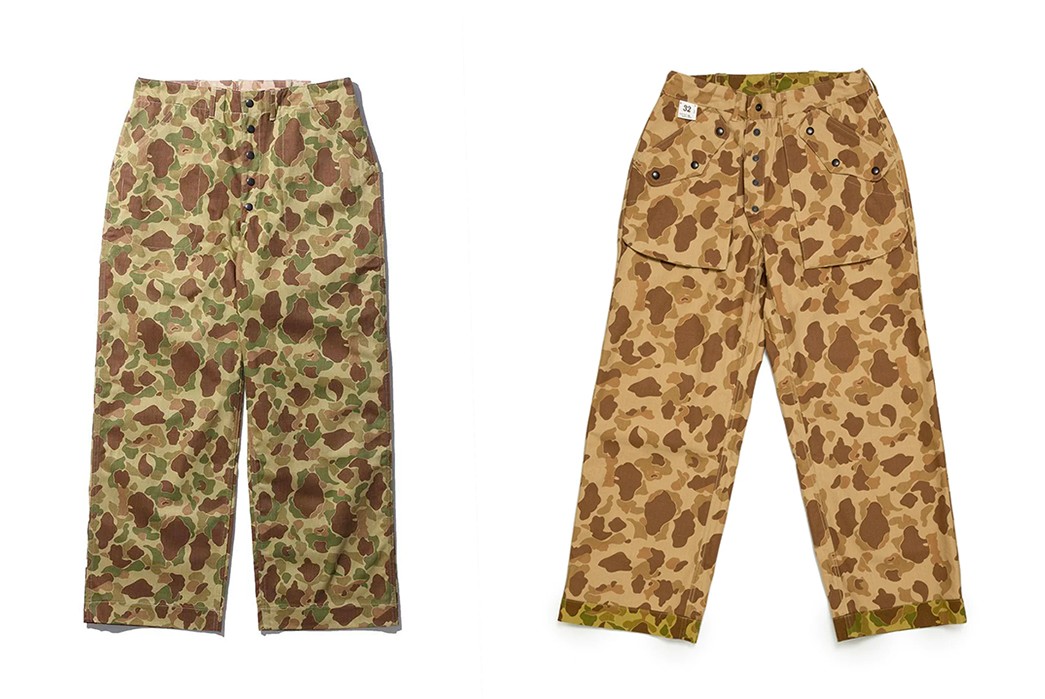
Warehouse 1940s USMC Parachutist Pants, available for $300 from Clutch Cafe.
John Lofgren
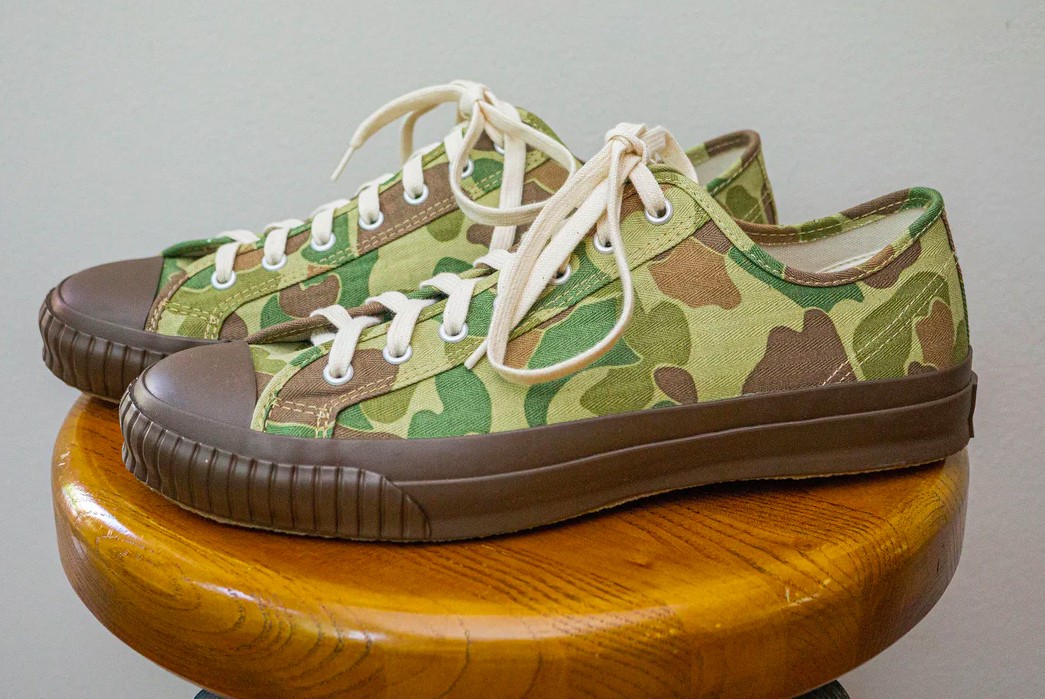
John Lofgren JLB WWII USMC Camo Sneakers, available from Franklin & Poe for $180.
You may know John Lofgren for his end-tier reproduction boots, but his footwear line extends to Japanese-made sneakers, crafted by artisans in Kurume. This particular pair of JLB Sneakers features a frogskin camo upper.
Ball and Buck
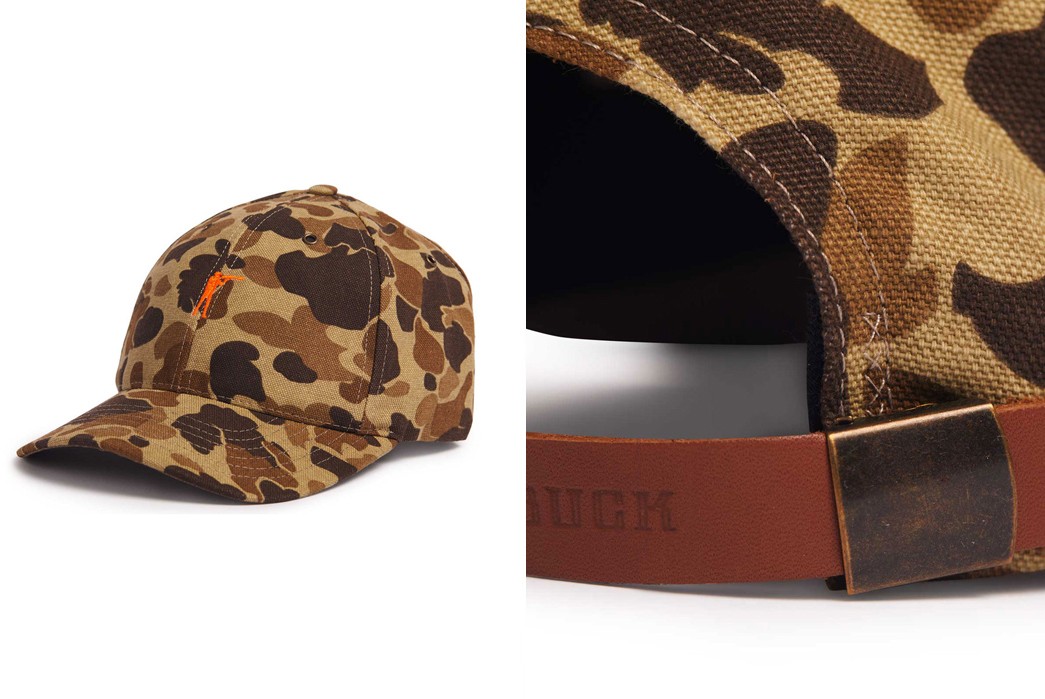
There’s a reason that camouflage helmet covers became common before entire uniforms; your head is the most exposed. Frogskin caps work with almost any combination of solid-colored clothing.
Available from Manready Mercantile for $48.
Over Under
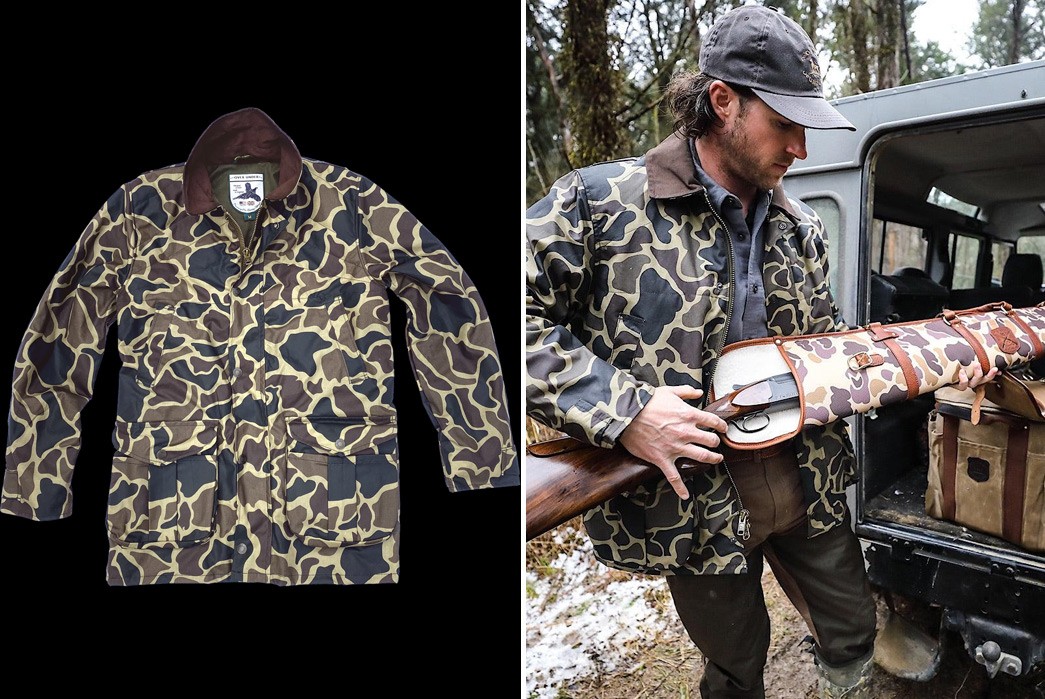
Waterproof waxed canvas is a god-send for hunting. This deluxe jacket will not only store everything you need but its smart trim and timeless proportions will stand out in the best way possible.
The Wingmaster Duck Camo Field Jacket is available on Over Under for $425.00.
SM Wholesale USA
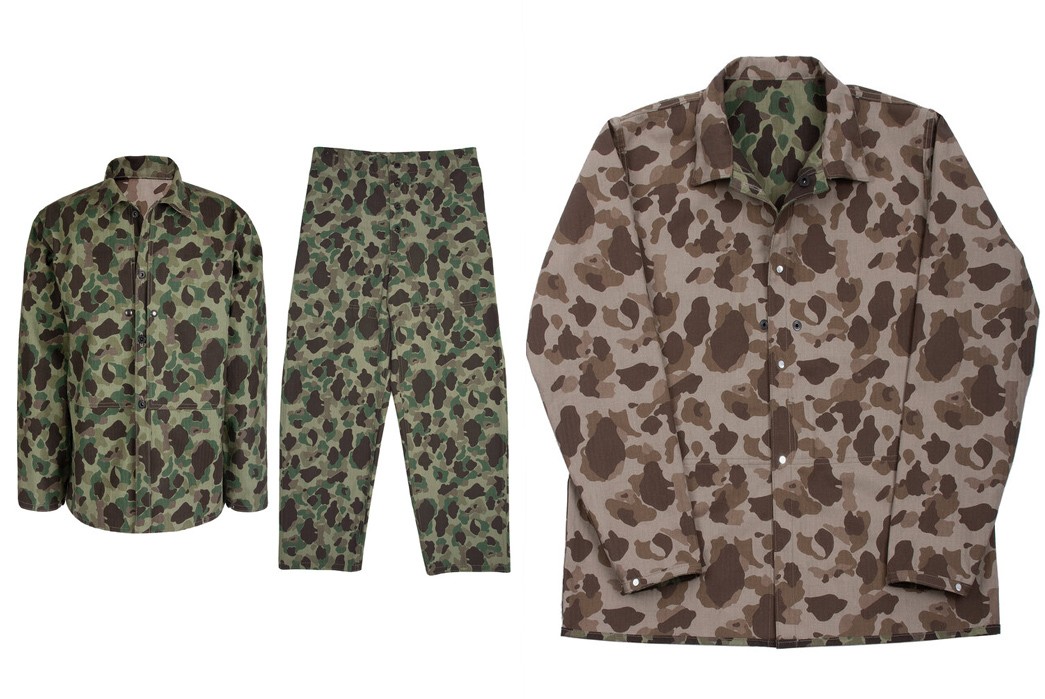
The P-44 uniform is a true icon that saw action in World War II and Korea. New sets—which include the trousers and the blouse—have recently been restocked and they’re ready for the green jungles and brown brush.
SM Wholesale USA‘s reputation in Hollywood precedes them and I can vouch for the quality of their New USMC P-44 Camouflage Uniform Set at $329.00.
World War II Impressions
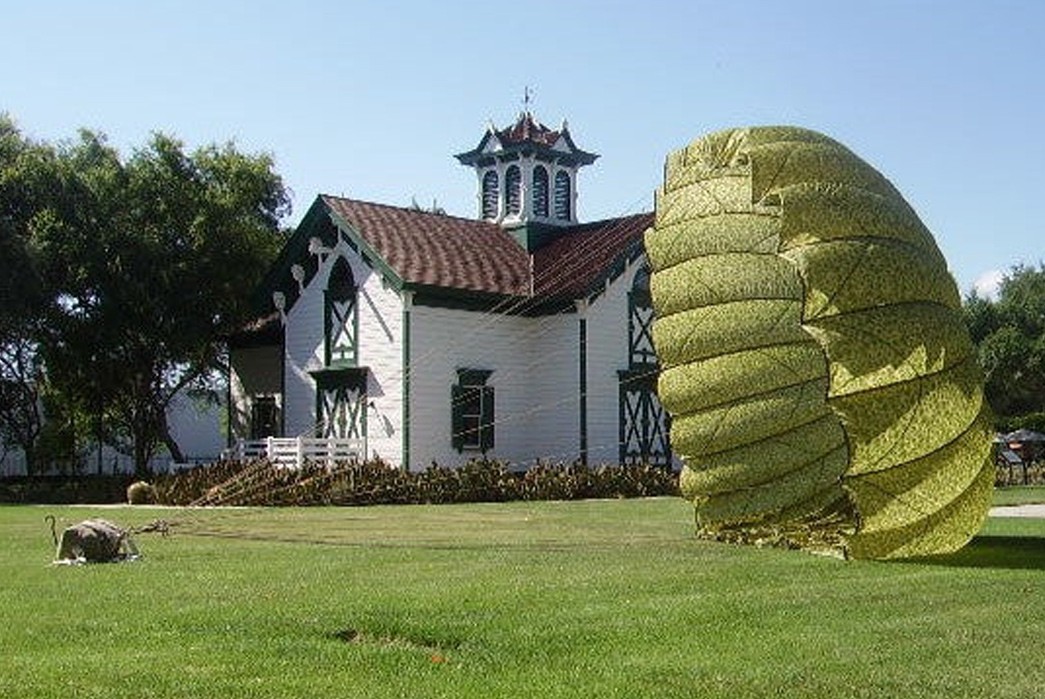
If you want a really authentic wartime experience, craft your own frogskin creations from a captured parachute as the Germans did! All kidding aside, this is just a cool reproduction and it speaks to this vendor’s passion for historical accuracy. They restock their camouflage on a rolling basis so check their site regularly. If you do happen to need a Parachute Canopy, Camouflage, 28ft then drop into World War II Impressions for $1,600.00.

